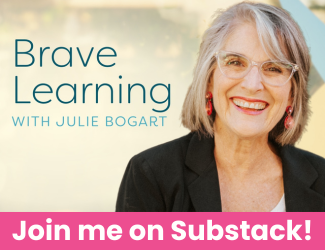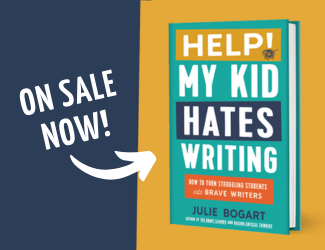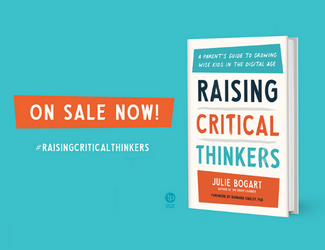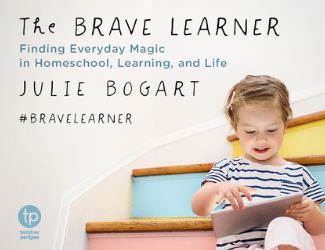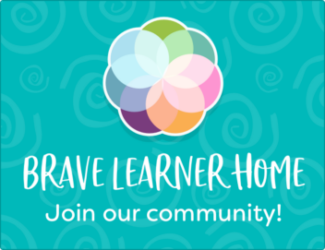To be a good academic writer, it helps to be an effective reader. Close reading of texts is the key. I found a great set of tips here:
Archive for March, 2009
Brave Writer vs. the other programs
For those of you I met at the APACHE conference, welcome to Brave Writer’s blog! So good to have you. I enjoyed getting to know the many moms new to Brave Writer. One of the primary questions I answered all day both days had to do with what makes Brave Writer distinctive in the homeschool writing market. Seemed like it was time to talk about that here on the blog, again.
Our company name is “Brave Writer,” not “Brave Writing” and there’s a reason for that. We teach writers (people). We’re interested in the quirky process of dredging up words from inside and making them accessible to readers. While it’s important to also talk about form and style, these aren’t relevant as long as the writer is tied up in knots worried about what he or she has to say. Until a writer wants to express an idea or insight or thought or fact, no amount of instruction in the paragraph will make words-worth-reading come forth.
(more…)
Friday Freewrite: Family time!
What would you do to entertain your family without spending any money?
By spring, unschooling
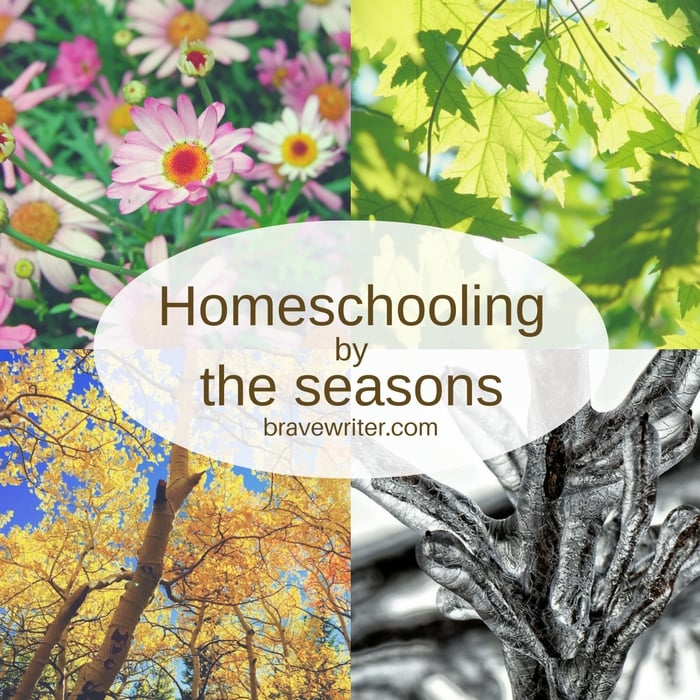
I used to tell audiences that we had a three-pronged approach to home education: Sonlight, Charlotte Mason and Unschooling.
In Autumn:
We’d follow the Sonlight curriculum with its scheduled novels, fast clip workbooks, and history immersion. Fall brought energy and focus. I could prepare lessons, stay on top of a schedule, and take advantage of my kids’ love for crisp unused materials.
In Winter:
After the Christmas break, when bare trees, grey skies and snow took away our chance to head outdoors consistently, we moved into Charlotte Mason mode. The cozy house lent itself to fires and read alouds, candles and poetry teatimes. We’d watch birds, study pine cones, take brisk walks in barren parks or go skiing. We’d also delve into the arts: we’d visit the art museum, watch classic films, and learn to knit. Schedules felt wearying and workbooks, frayed and tired. Poetry teatimes and hand crafts, literature and the arts, nature and conversation.
By Spring:
After all that great academic effort, we’d collapse into unintended unschooling. Seemed our energies for organized education would suddenly evaporate under the glare of sunshine, spring sports and theatrical performance! We’d follow the educational muse wherever she took us. Spring turned into “party school” where we’d organize a big Gold Rush dig or we’d invite a gaggle of girls over to immerse themselves in what we’d learned about India (complete with foods, henna and saris). Field trips were so natural and easy in spring.
Today:
Now that three of the kids aren’t at home, schooling along with us, my younger two and I don’t follow a particular schedule or style. The two at home mostly wake up at about 12:00 noon. I do my work in the mornings and we have the routine of “school work” in the afternoons. Yet all those lifestyles live in me and in our home. We can and do follow a more disciplined approach to some subjects (math with a tutor has created a routine we can all sustain more happily than if I just expect the kids to learn it as they go). And we are utterly free with others (history is no longer tethered to a spine; we typically watch movies and read literature and allow history to find its way into our lives more organically; though we do use Story of the World as a good solid reference). We have lots more time and space (no more toddlers, only two sharing one computer). Conversations are deep, long and satisfying. Poetry teatimes are still a highlight.
Having grown up in our family, the younger two seem to naturally self-educate in a way that the older ones didn’t (or at least, they didn’t come to it as naturally). I’m amazed at the way each of them tackles what they want to learn. For instance, Caitrin (12) is vegan. She started as vegetarian and due to the influence of her “away-at-college” older sister, she decided to take it further. Veganism has led her to study about how food is produced in America, what conditions animals are raised in for our consumption (warning: it’s pretty graphic and ugly once you get into it), what it is to be healthy (she’s spent hours learning about nutrients, which ones she needs, how to get them), and how to cook! She’s taken over dinners, using her magazine “The Vegetarian Times” to help her produce very tasty meals for all of us.
There’s space and time for all of this because I don’t feel panicked about her education, because we don’t have toddlers, because I recognize a great learning trend when I see one. I didn’t always feel this way. I remember panicking, chasing toddlers and nursing babies, and I remember doubting that something like veganism could really lead to a quality learning experience.
What I like to say to moms when they ask me about unschooling or child-led learning: it’s all a process for you too. You’re in your own learning process about what it is to homeschool, educate, nurture and lead your children. Be patient with yourself. Affirm the good, gently let go of what doesn’t work. Over time, you will find the rhythm that is right for your family.
You knew your gamer would make a career of it…
Can you believe this? Video Game Grad Programs Opens Up Industry
Traditionally, video game designers learned their trade from other designers, a system that meant the people who made the games were often living in a monoculture. But that’s changed recently; for the past five or 10 years, universities have been offering degree programs in video game design.
The programs are not about coding; instead they look at games as a medium for artistic experimentation and collaboration. And as students emerge, they are gradually making their mark on the industry.
My kids have told me for years that they would be able to earn a living off gaming. Now, it appears they were right!












